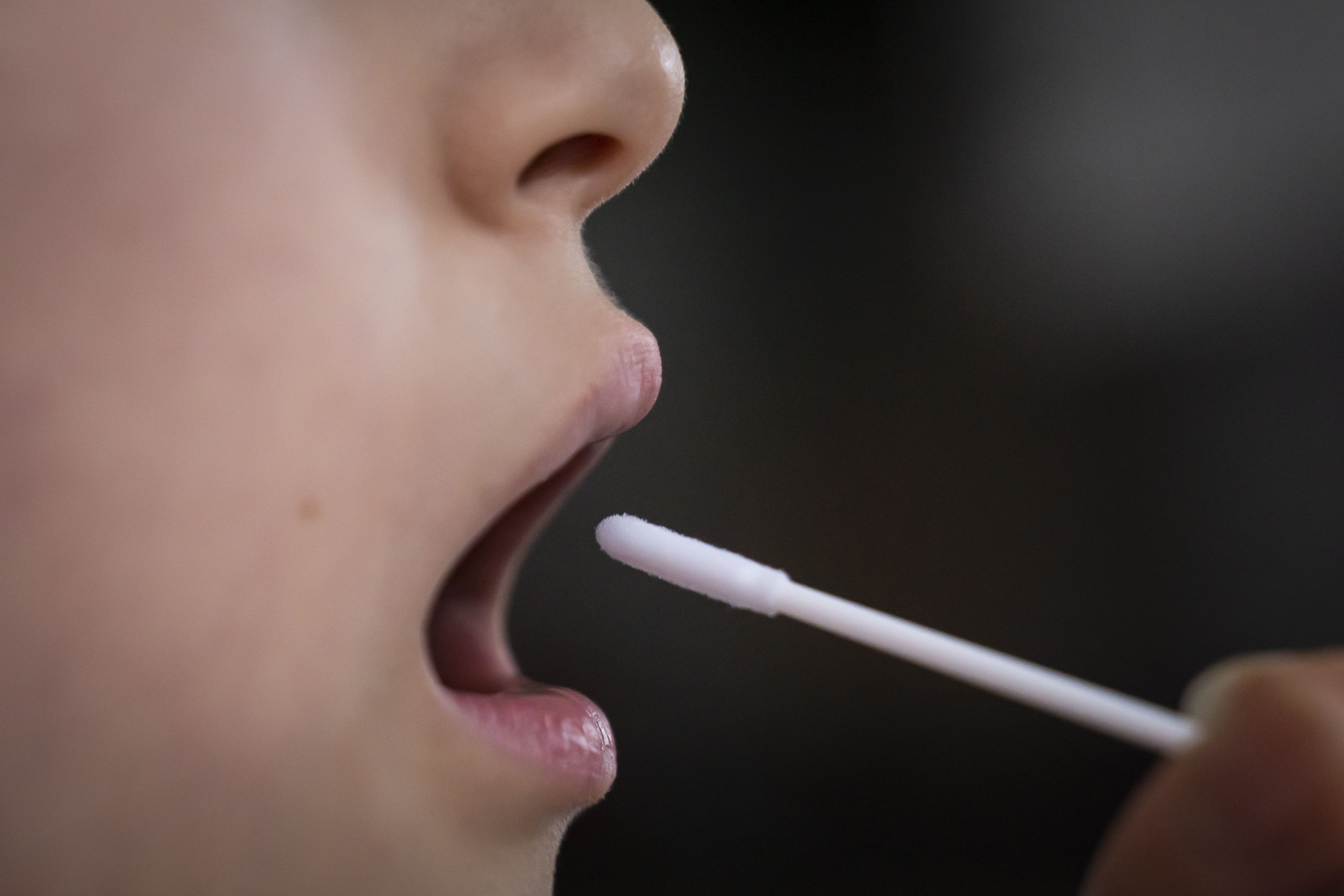Total Covid infections lowest in four months, though levels rise in children
The virus is also becoming more prevalent among 35-49 year-olds.

Your support helps us to tell the story
From reproductive rights to climate change to Big Tech, The Independent is on the ground when the story is developing. Whether it's investigating the financials of Elon Musk's pro-Trump PAC or producing our latest documentary, 'The A Word', which shines a light on the American women fighting for reproductive rights, we know how important it is to parse out the facts from the messaging.
At such a critical moment in US history, we need reporters on the ground. Your donation allows us to keep sending journalists to speak to both sides of the story.
The Independent is trusted by Americans across the entire political spectrum. And unlike many other quality news outlets, we choose not to lock Americans out of our reporting and analysis with paywalls. We believe quality journalism should be available to everyone, paid for by those who can afford it.
Your support makes all the difference.Total Covid-19 infections in the UK have dropped for the fourth week in a row and are now at a level last seen at the start of autumn 2022, figures show.
Infections are not falling across all age groups, however, with increases in England among primary and secondary school children and for 35-49 year-olds.
The recent drop in coronavirus patients in hospital has also come to a halt, as health experts said there were “concerning” signs the number may be starting to rise.
A total of 941,800 people in private households in the UK were likely to have had Covid-19 in the week ending January 24, down 15% from 1.1 million the previous week, according to the Office for National Statistics (ONS).
This is the lowest UK total since the week ending September 14 2022.
Infections peaked at 3.0 million at the end of December, following a surge in the run-up to Christmas.
This was below the levels reached in previous waves, including in spring 2022 when the weekly total climbed to a record 4.9 million.
Michelle Bowen, ONS head of health surveillance, said that while infections across the UK nations showed “an overall decrease”, there are “differing trends when we look across age groups”.
She added: “In England we have seen increases in school age children and those aged 35-49 years in the latest week, with decreases only seen in over-50s.
“We will continue to monitor the data closely to see how the situation evolves in the coming weeks.”
Covid-19 is most prevalent in Northern Ireland, where one in 65 people is estimated to have the virus.
For England and Scotland the estimate is one in 70, while for Wales it is one in 80.
Scotland’s estimate is the lowest the nation has seen in more than a year, since December 2021.
The ONS infection survey is the most reliable measure of the prevalence of coronavirus and is based on a sample of swab tests from households across the country.
The latest figures show 1.6% of children in England between the age of two and school Year 6 were likely to test positive for Covid-19, up from 1.0% the previous week, along with 1.5% of children from school Year 7 to 11, up from 1.2%.
For 35-49 year-olds the proportion has risen from 1.4% to 1.6%.
Separate NHS data shows the number of people in hospital in England who have tested positive for Covid-19 stood at 6,055 on February 1, up 8% on the previous week.
Patient numbers had been dropping since the start of the year, after peaking at 9,535 on December 29.
The rate of Covid-19 hospital admissions has increased, standing at 6.6 per 100,000 people last week, up from 5.9.
This is well below the rates seen during early waves of the virus, however.
Dr Mary Ramsay, head of immunisation at the UK Health Security Agency (UKHSA), said: “It’s concerning that the recent downward trend in Covid-19 hospitalisations has started to show signs of a reverse.
“Two variants, CH.1.1 and XBB.1.5, have a growth advantage in the UK and we can expect further increases in transmission and hospitalisations in future weeks.
“Older people are still at the highest risk of being hospitalised for Covid-19, so it’s vital those eligible get their autumn/winter booster jab.
“Come forward before Sunday February 12 when the offer comes to an end – it will top up your immunity and keep you protected.”
The majority of current Covid-19 infections in the UK are the variant known as BQ.1, which is part of the Omicron family.
The newer Omicron variants, CH.1.1 and XBB.1.5, are most likely to take over from BQ.1 as the next dominant variant in the UK, though neither have been classed as being “of concern”.